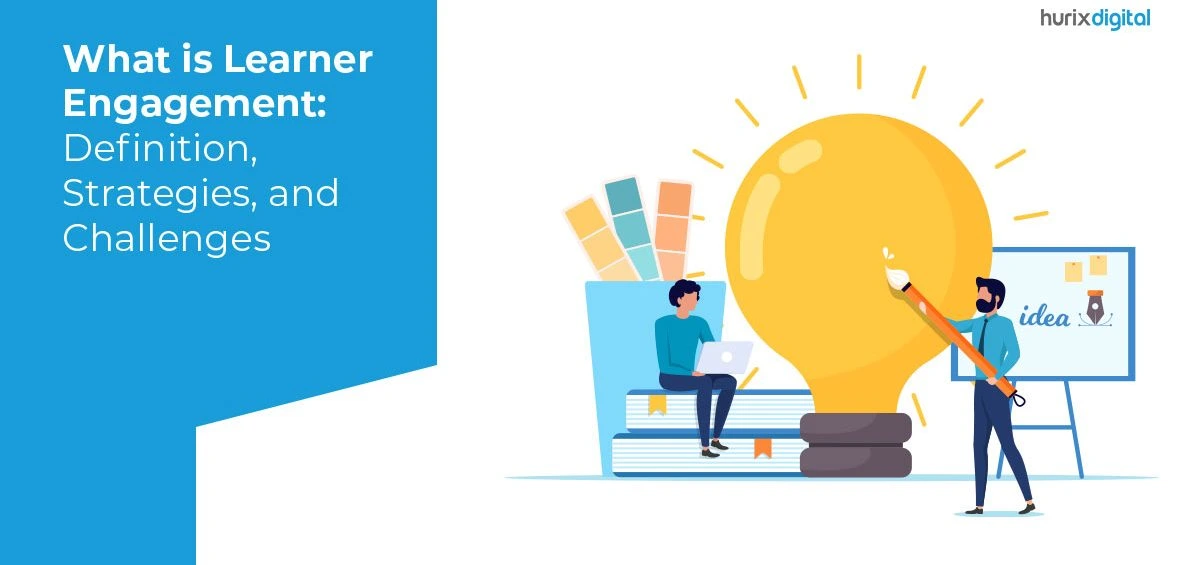What is Learner Engagement: Definition, Strategies, and Challenges
Picture this: Your organization invests in comprehensive workforce training programs, offering many learning opportunities to your employees. Are your employees truly engaged and making the most of these learning initiatives? Learner engagement is vital to unlocking the full potential of your workforce’s development. In this article, we delve into the crucial importance of learner engagement in the context of workforce learning and development. By understanding its value and exploring effective strategies to drive engagement, you can take your organization’s learning initiatives to new heights, driving success and growth in the ever-competitive business landscape.
Table of Contents:
- Definition of Learner Engagement
- Why is Learner Engagement Important?
- What are the Types of Learner Engagement?
- Strategies to Foster Learner Engagement
- Challenges in Fostering Learner Engagement
- Conclusion
Definition of Learner Engagement
Learner engagement refers to the active participation, enthusiasm, and commitment of individuals in the learning process. It goes beyond mere attendance and involves an emotional connection to the material, fostering curiosity, and a desire to explore and learn. Engaged learners are self-motivated and take ownership of their learning journey, leading to higher knowledge retention and a higher chance to apply it effectively in real-life scenarios.
Why is Learner Engagement Important?
Learner engagement holds immense importance in workforce learning and development for several compelling reasons. The advantages of learner engagement include:
-
Higher Learning Outcomes
Engaged learners are more likely to retain and apply information in their roles, improving job performance and productivity.
-
Enhanced Skill Acquisition
Engaged learners actively seek opportunities to acquire new skills and knowledge, contributing to their professional growth and career advancement.
-
Boosts Employee Morale
When employees feel engaged in their learning journey, they experience a sense of accomplishment, boosting their morale and overall job satisfaction.
-
Encourages Lifelong Learning
Cultivating learner engagement in employees fosters a culture of continuous learning within the organization, promoting ongoing skill development and adaptability.
What are the Types of Learner Engagement?
-
Cognitive Engagement
This type of engagement refers to learners’ mental effort and involvement in the learning process. When learners are actively thinking, analyzing, and reflecting on the content, they are cognitively engaged.
-
Behavioral Engagement
Behavioral engagement focuses on the learners’ observable actions and participation in learning activities. It includes completing assignments, participating in discussions, and attending training sessions.
-
Emotional Engagement
Emotional engagement relates to learners’ feelings and attitudes toward the learning experience. When learners experience a sense of enjoyment, interest, and enthusiasm, they are emotionally engaged.
Also Read: 10 eLearning Design Techniques for Improved Learner Engagement
Strategies to Foster Learner Engagement
-
Personalization
Tailoring learning experiences to individual learners’ needs, interests, and skill levels. Customizing content can enhance relevance and resonate more with the learners, making them feel valued and engaged.
-
Interactive Learning Content
Incorporate various interactive elements such as quizzes, simulations, gamification, and multimedia to make the learning process engaging and enjoyable.
-
Social Learning Opportunities
Encourage collaborative learning through discussions, peer-to-peer interactions, and knowledge-sharing platforms, fostering community and engagement.
-
Real-World Application
Connect learning content to real-life scenarios and job tasks, enabling learners to see the practical relevance of their acquired knowledge.
-
Continuous Feedback
Provide regular feedback and assessments to learners, helping them track their progress and identify areas for improvement, which can further motivate and engage them.
Challenges in Fostering Learner Engagement
Despite the advantages and benefits of learner engagement, organizations may encounter some challenges in nurturing an engaged learning environment:
-
Time Constraints
Employees’ busy schedules and workloads may limit the time they can devote to learning, making it challenging to maintain consistent engagement.
-
Technology Barriers
Some employees may struggle with new learning technologies, leading to a reluctance to engage with online training platforms.
-
Diverse Learning Preferences
Individuals have different learning styles and preferences. Catering to these diverse needs can be challenging in a one-size-fits-all learning approach.
-
Resistance to Change
Employees may resist engaging with new learning methods or technologies due to a fear of change or a preference for traditional learning approaches.
Also Read: Creating Custom Learning Programs for Online Learners
Conclusion
Learner engagement is a critical factor in workforce learning and development, driving employees’ motivation to acquire new skills and knowledge. By implementing effective strategies that foster cognitive, behavioral, and emotional engagement, organizations can create an enriched learning environment that boosts learning outcomes and employee satisfaction.
Recognizing the challenges and addressing them actively ensures that learner engagement becomes an integral part of workforce transformation, empowering employees to embrace continuous learning and thrive in an ever-evolving professional landscape.
At Hurix Digital, we specialize in building custom workforce learning programs ground up, with a learner engagement strategy built into the very foundation of these programs. Contact marketing@hurix.com to hear more about how we can help you transform your existing workforce learning content for better learner engagement.

Performance, Results, Growth, and Life-Long Learning define my professional life. I am passionate about making workplace learning planful, purposeful, and impactful. I take pride in partnering with clients and bringing them the best in learning design and creating solutions that address business challenges.









